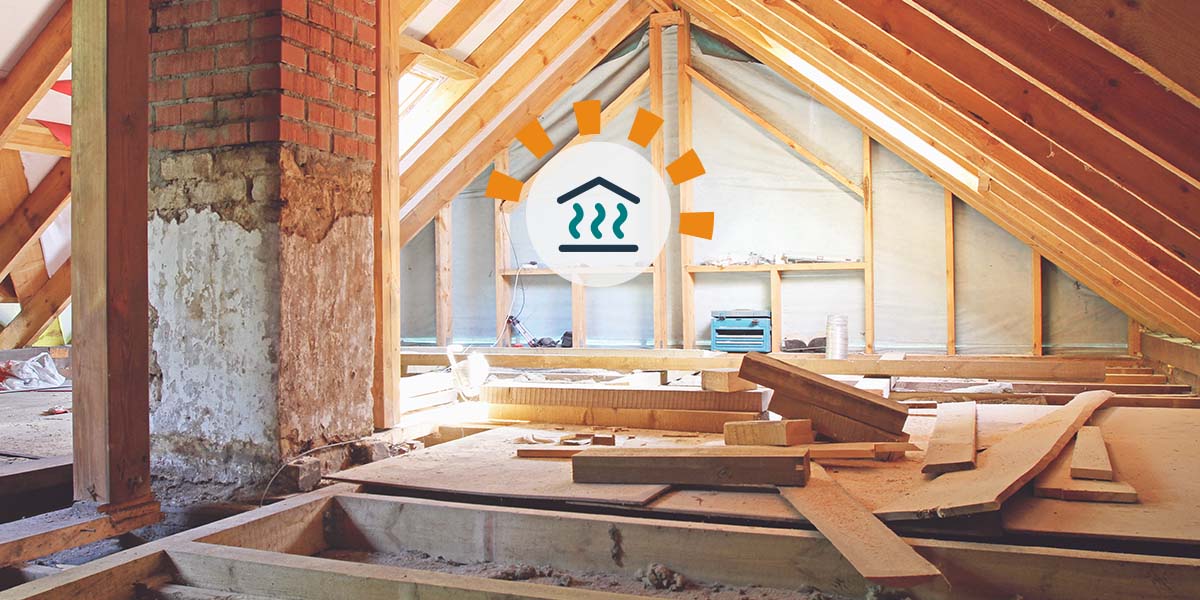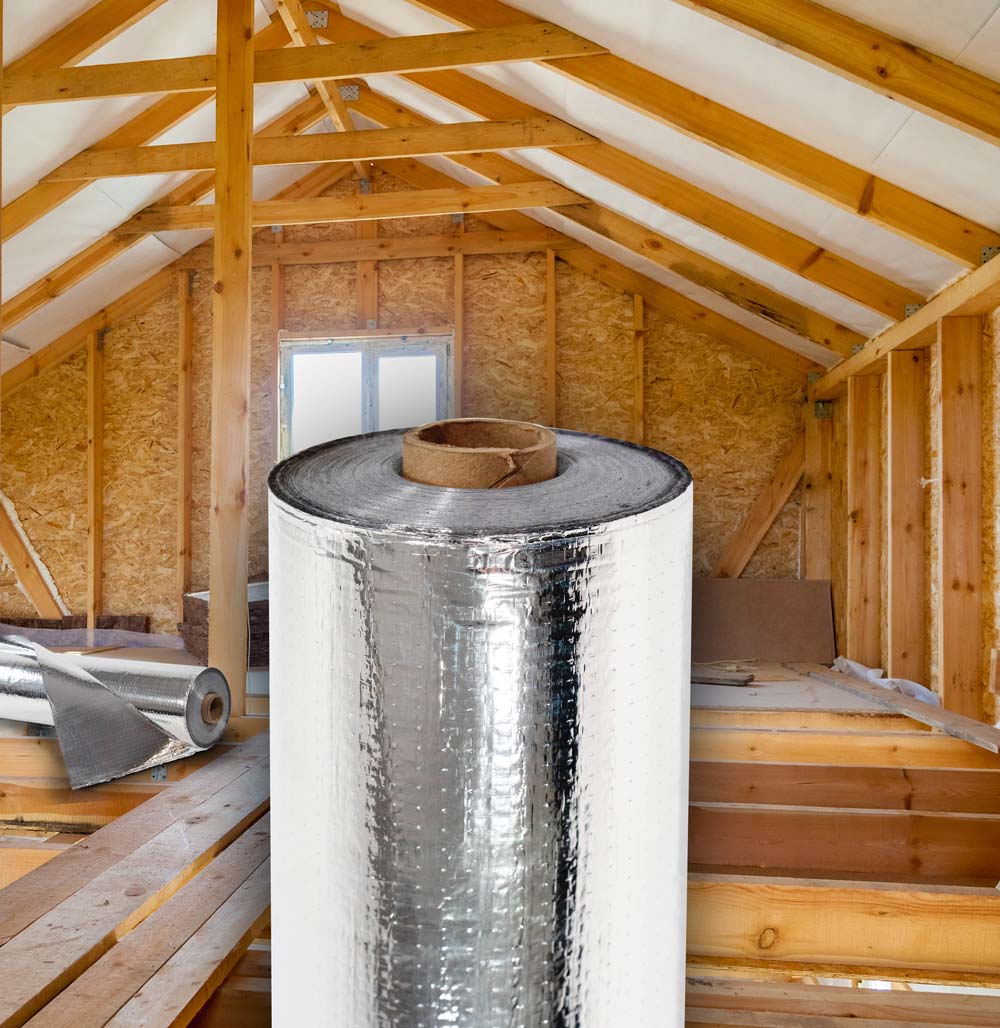Discover the Different Kinds Of Attic Insulation and Their One-of-a-kind Advantages for Your Home's Energy Effectiveness

Fiberglass Insulation
Fiberglass insulation is among the most typically utilized products for attic room insulation because of its outstanding thermal efficiency and cost-effectiveness. Composed of tiny glass fibers, this product efficiently catches air, creating an insulating barrier that aids maintain constant interior temperature levels. Its high R-value per inch makes it specifically effective at withstanding heat transfer, which is crucial for power preservation in homes.
Installation of fiberglass insulation is relatively simple, usually offered in batts or loose-fill kinds, accommodating different attic setups. In addition, it is non-combustible and resistant to wetness, decreasing the threat of mold growth. This sturdiness contributes to its longevity, making fiberglass a viable long-term financial investment for home owners.
Additionally, fiberglass insulation is commonly made from recycled materials, which enhances its eco-friendliness. The material can likewise add to soundproofing, decreasing noise transfer between spaces. While it is vital to wear protective gear during installment to avoid irritability from the fibers, the total benefits of fiberglass insulation, including power cost savings and environmental factors to consider, make it a popular choice for boosting attic performance and advertising a comfy living environment.
Spray Foam Insulation
Spray foam insulation is an extremely efficient option for attic insulation, recognized for its premium air securing and thermal efficiency. This ingenious insulation material is composed of a mix of isocyanate and polyol resin, which, when combined, increases quickly to load spaces and cavities in the attic area. Its capability to comply with numerous surface areas ensures a constant barrier versus air leakages, substantially reducing warmth loss throughout chillier months and heat gain during warmer periods.
One of the vital advantages of spray foam insulation is its high R-value per inch, which indicates it offers excellent thermal resistance in a relatively slim application. This is especially helpful in attic rooms where space is typically minimal. In addition, spray foam can aid reduce moisture build-up, minimizing the danger of mold and mildew and mildew growth, which can be destructive to both the structure and indoor air quality.
While the preliminary cost of spray foam insulation may be greater than standard options, its long-term power financial savings, combined with increased comfort and enhanced home worth, make it a beneficial financial investment for house owners looking for improved power performance. Attic Insulation DFW. In general, spray foam insulation stands apart as an efficient remedy for optimizing attic room insulation
Cellulose Insulation

Cellulose insulation is a popular choice for attic insulation, primarily made up of recycled paper products treated with fire resistants. This environmentally friendly alternative is recognized for its superb thermal performance, effectively minimizing warm transfer in both summer and winter Read Full Report season. The dense structure of cellulose enables it to fill voids and spaces in attic spaces, offering a smooth barrier versus air leaks.
Among the considerable advantages of cellulose insulation is its capacity to resist mold and parasites, owing to the fire resistant treatments used during manufacturing. In addition, it boasts go now a high R-value per inch, which translates right into exceptional energy efficiency. Homeowners can expect lower heating and cooling costs as an outcome of boosted insulation.
Setup is normally achieved through blowing loose cellulose right into the desired location, enabling for a quick and reliable process. This approach likewise lessens disruption to the existing framework. Cellulose insulation has a relatively reduced ecological impact, as its manufacturing procedure utilizes recycled materials, contributing to lasting building techniques.
Rock Wool Insulation
Amongst the numerous alternatives for attic room insulation, rock woollen, also called mineral woollen, attracts attention because of its outstanding thermal and acoustic efficiency. Made from natural or recycled materials, rock wool is produced by thawing rock and rotating it right into fibers, causing a product that provides excellent insulation buildings.
Among the significant advantages of rock woollen insulation is its high R-value, which suggests its effectiveness in standing up to heat flow. This particular not only boosts energy efficiency but additionally adds to maintaining a comfy indoor temperature year-round. Furthermore, rock wool is naturally fireproof, making it a more secure option for homes as it can withstand heats without melting or releasing poisonous fumes.
Additionally, rock woollen insulation excels in soundproofing capabilities, successfully minimizing noise transmission between spaces and from outside resources. On the whole, rock wool insulation offers a thorough solution for enhancing power performance, safety, and comfort in household setups.
Glowing Obstacle Insulation
Glowing obstacle insulation works as an effective remedy for reducing warmth transfer in attic rooms, particularly in warmer climates. This type of insulation works by mirroring induction heat far from living areas, therefore decreasing the amount of warm that gets in a home during hot climate - Attic Insulation DFW. Generally composed of a very reflective product, such blog as light weight aluminum foil, radiant obstacles are set up in attic rooms, dealing with the roof covering, where they can intercept incoming warm from the sunlight
The main advantage of glowing barrier insulation is its capacity to reduced cooling expenses. By reflecting warm instead of absorbing it, glowing barriers can aid maintain a much more stable indoor temperature level, reducing the work on a/c systems. This efficiency translates into reduced power costs and raised comfort for property owners.
In addition to energy savings, radiant barriers can additionally add to boosted indoor air quality. By reducing heat accumulation, they aid decrease moisture levels, which can avoid mold development and boost general air circulation. When set up correctly, radiant barrier insulation can be a very useful enhancement to any energy-efficient home, making it a deserving factor to consider for property owners looking to improve their attic insulation approach.
Verdict
In final thought, recognizing the different kinds of attic insulation-- fiberglass, spray foam, cellulose, rock wool, and glowing obstacles-- allows home owners to make informed decisions relating to power performance. By selecting the suitable insulation product, considerable reductions in energy prices can be accomplished, along with improvements in interior comfort.

In final thought, comprehending the various kinds of attic insulation-- fiberglass, spray foam, cellulose, rock woollen, and glowing obstacles-- makes it possible for home owners to make educated decisions pertaining to power performance.